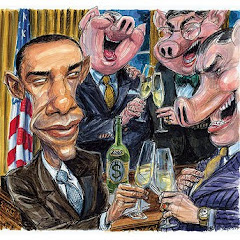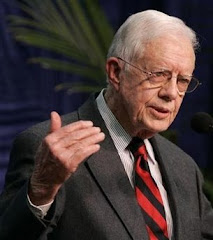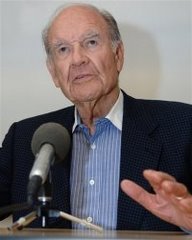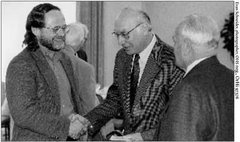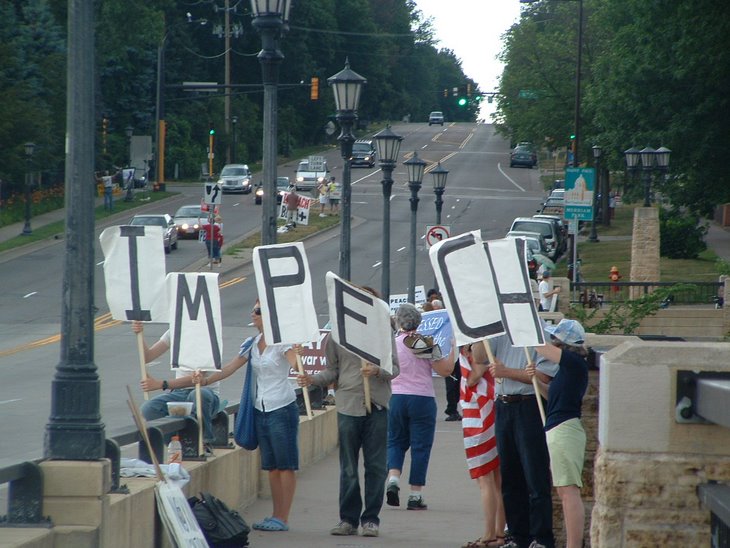I thought I would post them together because they both seem to compliment one another even though the last one doesn't mention the first though I think Adolf Reed should have mentioned Bob Herbert's excellent article as someone who was exposing what was going on with the Obama Administration fairly early on.
A call to build an anti-monopoly alliance and working class based progressive political party capable of challenging Wall Street for political and economic power is missed in both articles. Both are required.
Reed kind of ends the left's historic involvement kind of early, in my opinion. He should have taken us through the struggles to get the "Full Employment act of 1945" enacted--- labor and its left were very strong in this struggle.
Another thing; Reed doesn't mention by name either the Socialist Party or the Communist Party as the primary left organizations of this period from 1932 to 1946. Reed, like so many others, fails to point this out. This is very important. The left has always done best while the Socialists and Communists have worked together or at least were traveling along parallel paths. Working together worked out very well and very successfully with both of their involvements in the socialist Minnesota Farmer-Labor Party. No one seems to want to mention this very important fact.
I don't think Reed goes quite far enough in characterizing how many liberals, progressives and leftists were brought into creating a false image of Obama which he did not deserve and was not true. Many are still, to this very day, trying to characterize Obama as a liberal with a progressive agenda--- an outright lie. Reed is correct; Obama has a neo-liberal Wall Street agenda.
In discussing how the struggle for equality--- has been to a large extent abandoned--- Reed doesn't make clear the attempt of these same dishonest liberals, progressives and leftists to turn the discussion from fighting for equality to demanding "equity." The foundation-funded outfits, the think-tanks for the Democrats, have done this. "Equality" and "Equity" mean two different things. It's darn near impossible to gain equity while mass inequality persists.
The role of the Democratic Party hack and linguist, George Lakoff, in shaping the and defining the Democratic agenda has never been exposed--- not in Reed's piece below nor by anyone else. How are Lakoff's thoroughly reactionary writings and advice in the name of being "progressive" to the Democrats based largely on refining the dishonest and corrupt red-baiting politics Hubert H. Humphrey going unchallenged? This needs to be thoroughly discussed which means studying Lakoff's writings.
Again, I think some of these honest intellectuals are going to have to come to grips with the fact that most successful working class advances have come when the Socialist and Communist parties have been at their strongest points leading the working class. There can't be any beating around the bush on this point.
First Norman Thomas led his extremely influential, powerful, mass Socialist Party astray; then, a decade later, Earl Browder led the powerful Communist Party astray. Both after having contributed immensely towards building their respective parties.
We have different left parties simply because people coming from different walks of life having lived through different circumstances view the world and the role of our movements differently... but, the working together of the Socialists and Communists in Minnesota has proven unity in action can be achieved--- but; and this is an important BUT, but only when the grassroots and rank-and-file from both parties demand this.
We really need some kind of forums and round-table discussions bringing together liberals, progressives and leftists.
On many important issues from peace to full employment and the Minimum Wage becoming a real living wage along with real health care reform and the need for public child care centers we should be able to come to a meeting of the minds and find common ground uniting us in struggle in a way that brings our multi-national, female-male, young and old working class into action.
The circulation and organized discussion of these two articles could lead to very powerful action.
Alan L. Maki
The Long, Slow Surrender of American Liberals
For
nearly all the twentieth century there was a dynamic left in the
United States grounded in the belief that unrestrained capitalism
generated unacceptable social costs. That left crested in influence
between 1935 and 1945, when it anchored a coalition centered in the
labor movement, most significantly within the Congress of Industrial
Organizations (CIO). It was a prominent voice in the Democratic Party
of the era, and at the federal level its high point may have come in
1944, when FDR propounded what he called “a second Bill of Rights.”
Among these rights, Roosevelt proclaimed, were the right to a “useful
and remunerative job,” “adequate medical care,” and “adequate
protection from the economic fears of old age, sickness, accident,
and unemployment.”
The
labor-left alliance remained a meaningful presence in American
politics through the 1960s. What have become known as the social
movements of the Sixties — civil rights activism, protests
against the Vietnam War, and a renewed women’s movement —
were vitally linked to that egalitarian left. Those movements drew
institutional resources, including organizing talents and committed
activists, from that older left and built on both the legislative and
the ideological victories it had won. But during the 1980s and early
1990s, fears of a relentless Republican juggernaut pressured those
left of center to take a defensive stance, focusing on the immediate
goal of electing Democrats to stem or slow the rightward tide. At the
same time, business interests, in concert with the Republican right
and supported by an emerging wing of neoliberal Democrats, set out to
roll back as many as possible of the social protections and
regulations the left had won. As this defensiveness overtook leftist
interest groups, institutions, and opinion leaders, it increasingly
came to define left-wing journalistic commentary and criticism. New
editorial voices — for example, The American Prospect —
emerged to articulate the views of an intellectual left that defined
itself as liberal rather than radical. To be sure, this shift was not
absolute. Such publications as New Labor Forum, New Politics,
Science & Society, Monthly Review, and others maintained
an oppositional stance, and the Great Recession has encouraged new
outlets such as Jacobin and Endnotes. But the American
left moved increasingly toward the middle.
Today,
the labor movement has been largely subdued, and social activists
have made their peace with neoliberalism and adjusted their horizons
accordingly. Within the women’s movement, goals have shifted from
practical objectives such as comparable worth and universal child
care in the 1980s to celebrating appointments of individual women to
public office and challenging the corporate glass ceiling. Dominant
figures in the antiwar movement have long since accepted the
framework of American military interventionism. The movement for
racial justice has shifted its focus from inequality to “disparity,”
while neatly evading any critique of the structures that produce
inequality.
The
sources of this narrowing of social vision are complex. But its most
conspicuous expression is subordination to the agenda of a Democratic
Party whose center has moved steadily rightward since Ronald Reagan’s
presidency. Although it is typically defended in a language of
political practicality and sophistication, this shift requires, as
the historian Russell Jacoby notes, giving up “a belief that the
future could fundamentally surpass the present,” which
traditionally has been an essential foundation of leftist thought and
practice. “Instead of championing a radical idea of a new society,”
Jacoby observes in The End of Utopia, “the left ineluctably
retreats to smaller ideas, seeking to expand the options within the
existing society.”
The
atrophy of political imagination shows up in approaches to strategy
as well. In the absence of goals that require long-term organizing —
e.g., single-payer health care, universally free public higher
education and public transportation, federal guarantees of housing
and income security — the election cycle has come to exhaust
the time horizon of political action. Objectives that cannot be met
within one or two election cycles seem fanciful, as do any that do
not comport with the Democratic agenda. Even those who consider
themselves to the Democrats’ left are infected with electoralitis.
Each election now becomes a moment of life-or-death urgency that
precludes dissent or even reflection. For liberals, there is only one
option in an election year, and that is to elect, at whatever cost,
whichever Democrat is running. This modus operandi has tethered what
remains of the left to a Democratic Party that has long since
renounced its commitment to any sort of redistributive vision and
imposes a willed amnesia on political debate. True, the last Democrat
was really unsatisfying, but this one is better; true, the
last Republican didn’t bring destruction on the universe, but this
one certainly will. And, of course, each of the “pivotal” Supreme
Court justices is four years older than he or she was the last time.
Why
does this tailing behind an increasingly right-of-center Democratic
Party persist in the absence of any apparent payoff? There has nearly
always been a qualifying excuse: Republicans control the White House;
they control Congress; they’re strong enough to block progressive
initiatives even if they don’t control either the executive or the
legislative branch. Thus have the faithful been able to take comfort
in the circular self-evidence of their conviction. Each undesirable
act by a Republican administration is eo ipso evidence that if
the Democratic candidate had won, things would have been much better.
When Democrats have been in office, the imagined omnipresent threat
from the Republican bugbear remains a fatal constraint on action and
a pretext for suppressing criticism from the left.
Exaggerating
the differences between Democratic and Republican candidates,
moreover, encourages the retrospective sanitizing of previous
Democratic candidates and administrations. If only Al Gore had been
inaugurated after the 2000 election, the story goes, we might well
not have had the September 11 attacks and certainly would not
have had the Iraq War — as if it were unimaginable that the
Republican reaction to the attacks could have goaded him into
precisely such an act. And considering his bellicose stand on Iraq
during the 2000 campaign, he well might not have needed goading.
The
stale proclamations of urgency are piled on top of the standard
jeremiads about the Supreme Court and Roe v. Wade. The
“filibuster-proof Senate majority” was the gimmick that spruced
up the 2008 election cycle, conveniently suggesting strategic
preparation for large policy initiatives while deferring discussion
of what precisely those initiatives might be. It was an ideal
diversion that gave wonks, would-be wonks, and people who just watch
too much cable-television news something to chatter about and a
rhetorical basis for feeling “informed.” It was, however, built
on the bogus premise that Democrat = liberal.
Most
telling, though, is the reinvention of the Clinton Administration as
a halcyon time of progressive success. Bill Clinton’s record
demonstrates, if anything, the extent of Reaganism’s victory in
defining the terms of political debate and the limits of political
practice. A recap of some of his administration’s greatest hits
should suffice to break through the social amnesia.
Clinton ran
partly on a pledge of “ending welfare as we know it”; in office
he both presided over the termination of the federal government’s
sixty-year commitment to provide income support for the poor and
effectively ended direct federal provision of low-income housing. In
both cases his approach was to transfer federal subsidies —
when not simply eliminating them — from impoverished people to
employers of low-wage labor, real estate developers, and landlords.
He signed into law repressive crime bills that increased the number
of federal capital offenses, flooded the prisons, and upheld
unjustified and racially discriminatory sentencing disparities for
crack and powder cocaine. He pushed NAFTA through over strenuous
objections from labor and many congressional Democrats. He temporized
on his campaign pledge to pursue labor-law reform that would tilt the
playing field back toward workers, until the Republican takeover of
Congress in 1995 gave him an excuse not to pursue it at all. He
undertook the privatization of Sallie Mae, the Student Loan Marketing
Association, thereby fueling the student-debt crisis.
Notwithstanding
his administration’s Orwellian folderol about “reinventing
government,” his commitment to deficit reduction led to, among
other things, extending privatization of the federal meat-inspection
program, which shifted responsibility to the meat industry — a
reinvention that must have pleased his former Arkansas patron, Tyson
Foods, and arguably has left its legacy in the sporadic outbreaks and
recalls that suggest deeper, endemic problems of food safety in the
United States. His approach to health-care reform, like Barack
Obama’s, was built around placating the insurance and
pharmaceutical industries, and its failure only intensified the
blitzkrieg of for-profit medicine.
In
foreign policy, he was no less inclined than Reagan or George
H. W. Bush to engage in military interventionism. Indeed,
counting his portion of the Somali operation, he conducted nearly as
many discrete military interventions as his two predecessors
combined, and in four fewer years. Moreover, the Clinton
Administration initiated the “extraordinary rendition” policy,
under which the United States claims the right to apprehend
individuals without charges or public accounting so that they can be
imprisoned anywhere in the world (and which the Obama Administration
has explicitly refused to repudiate). Clinton also increased American
use of “privatized military services” — that is,
mercenaries.
The
nostalgic mist that obscures this record is perfumed by evocations of
the Clinton prosperity. Much of that era’s apparent prosperity,
however, was hollow — the effects of first the tech bubble and
then the housing bubble. His administration was implicated in both,
not least by his signing the repeal of the 1933 Glass–Steagall Act,
which had established a firewall between commercial and investment
banking in response to the speculative excesses that sparked the
Great Depression. And, as is the wont of bubbles, first one and then
the other burst, ushering in the worst economic crisis since the
depression that had led to the passage of Glass–Steagall in the
first place. To be sure, the Clinton Administration was not solely or
even principally responsible for those speculative bubbles and their
collapse. The Republican administrations that preceded and succeeded
him were equally inclined to do the bidding of the looters and sneak
thieves of the financial sector. Nevertheless, Clinton and the Wall
Street cronies who ran his fiscal and economic policy — Robert
Rubin, Lawrence Summers, Alan Greenspan — are no less
implicated than the Republicans in having brought about the economic
crisis that has lingered since 2008.
It
is difficult to imagine that a Republican administration could have
been much more successful in advancing Reaganism’s agenda. Indeed,
Clinton made his predilections clear from the outset.
“We’re
Eisenhower Republicans here,” he declared, albeit exasperatedly,
shortly after his 1992 victory. “We stand for lower deficits, free
trade, and the bond market. Isn’t that great?”
Taking
into account the left’s disappearance into Democratic neoliberalism
helps explain how and why so many self-proclaimed leftists or
progressives — individuals, institutions, organizations, and
erstwhile avatars of leftist opinion such as The Nation —
came to be swept up in the extravagant rhetoric and expectations that
have surrounded the campaign, election, and presidency of Barack
Obama.
Obama
and his campaign did not dupe or simply co-opt unsuspecting radicals.
On the contrary, Obama has been clear all along that he is not a
leftist. Throughout his career he has studiously distanced himself
from radical politics. In his books and speeches he has frequently
drawn on stereotypical images of leftist dogmatism or folly. When not
engaging in rhetorically pretentious, jingoist oratory about the
superiority of American political and economic institutions, he has
often chided the left in gratuitous asides that seem intended mainly
to reassure conservative sensibilities of his judiciousness —
rather as Booker T. Washington used black chicken-stealing
stereotypes to establish his bona fides with segregationist
audiences. This inclination to toss off casual references to the
left’s “excesses” or socialism’s “failure” has been a
defining element of Brand Obama and suggests that he is a new kind of
pragmatic progressive who is likely to bridge — or rise
above — left and right and appeal across ideological
divisions. Assertions that Obama possesses this singular ability
contributed to the view that he was electable and, once elected,
capable of forging a new, visionary, postpartisan consensus.
This
feature of Brand Obama even suffused the enthusiasm of those who
identify as leftists, many of whom at this point would like to roll
up their past proclamations behind them. Here was a nominal
progressive who actually could win the presidency, clearing the
electoral hurdle that Jesse Jackson, Ralph Nader, and other protest
candidates could not. Yet few acknowledged the extent to which
Obama’s broad appeal hinged on his disavowals of left “excesses.”
What kind of “progressive” pursues a political strategy of
distancing himself from the left by rehearsing hackneyed conservative
stereotypes? Even granting the never-quite-demonstrated assertion
that Obama is, in his heart of hearts, committed to a progressive
agenda (a trope familiar from the Clinton Administration, we might
recall), how would a coalition built on reassuring conservatives not
seriously constrain his administration?
The
generalities with which Obama laid out his vision made it easy to
avoid such questions. His books are not substantive articulations of
a social program but performances in which his biographical narrative
and identity stands in for a vaguely transformational politics.
Sometimes this projection has been not so subtle. In an interview
with the journalist James Traub a year before the election, Obama
averred: “I think that if you can tell people, ‘We have a
president in the White House who still has a grandmother living in a
hut on the shores of Lake Victoria and has a sister who’s half
Indonesian, married to a Chinese-Canadian,’ then they’re going to
think that he may have a better sense of what’s going on in our
lives and in our country. And they’d be right.”
Unsurprisingly,
therefore, there is little with which to disagree in those books.
They meant to produce precisely that effect. Matt Taibbi
characterized Obama’s political persona in early 2007 as an
ingeniously crafted human cipher, a man without race, ideology,
geographic allegiances, or, indeed, sharp edges of any kind. You
can’t run against him on issues because you can’t even find him
on the ideological spectrum. Obama’s “Man for all seasons” act
is so perfect in its particulars that just about anyone can
find a bit of himself somewhere in the candidate’s background,
whether in his genes or his upbringing. . . . [H]is
strategy seems to be to appear as a sort of ideological Universalist,
one who spends a great deal of rhetorical energy showing that he
recognizes the validity of all points of view, and conversely
emphasizes that when he does take hard positions on issues, he often
does so reluctantly.
Taibbi
described Obama’s political vision as “an amalgam of Kennedy,
Reagan, Clinton and the New Deal; he is aiming for the middle of the
middle of the middle.” Taibbi is by no means alone in this view;
others have been more sharply critical in drawing out its
implications, even during the heady moment of the 2008 campaign.
Nearer
the liberal mainstream, Paul Krugman repeatedly demonstrated that
many of candidate Obama’s positions and political inclinations were
not only inconsistent with the hyperbolic rhetoric that surrounded
the campaign but were moreover not even especially liberal. When in a
June 2008 issue of The Nation Naomi Klein expressed
concern about Obama’s profession of love for the free market and
his selection of very conventionally neoliberal economic advisers,
Krugman responded rather waspishly, “Look, Obama didn’t pose as a
Nation-type progressive, then turn on his allies after the
race was won. Throughout the campaign he was slightly less
progressive than Hillary Clinton on domestic issues — and more
than slightly on health care. If people like Ms. Klein are
shocked, shocked that he isn’t the candidate of their fantasies,
they have nobody but themselves to blame.” As early as 2006, Ken
Silverstein noted in these pages that the rising star’s extensive
corporate and financial-sector connections suggested that his
progressive supporters should rein in their hopes. Larissa
MacFarquhar, in a 2007 New Yorker profile, also gave reason
for restraint to those projecting “transformative” expectations
onto Obama. “In his view of history,” she reports, “in his
respect for tradition, in his skepticism that the world can be
changed any way but very, very slowly, Obama is deeply
conservative. . . . Asked whether he has changed his
mind about anything in the past twenty years, he says ‘I’m
probably more humble now about the speed with which government
programs can solve every problem.’ ”
These
and other critics, skeptics, and voices of caution were largely
drowned out in the din of the faithful’s righteous fervor. Some in
the flock who purported to represent the campaign’s left flank,
such as the former SDS stalwart Carl Davidson and the professional
white antiracist Tim Wise, denounced Obama’s critics as
out-of-touch, pie-in-the-sky radicals who were missing the train of
history because they preferred instead to wallow in marginalization.
This response is a generic mantra of political opportunists. Some who
called for climbing on the bandwagon insisted that Obama was a secret
progressive who would reveal his true politics once elected. Others
relied on the familiar claim that actively supporting the campaign —
as distinct from choosing to vote for him as yet another lesser
evil — would put progressives in a position to exert leftward
pressure on his administration.
Again
and again, perfectly sentient adults cited the clinching arguments
made on the candidate’s behalf by their children. We were urged to
marvel at and take our cues from the already indulged
upper-middle-class Children of the Corn and their faddish, utterly
uninformed exuberance. And it was easy to understand why so many of
them found Obama to be absolutely new under the sun. To them he was.
A twenty-five-year-old on November 4, 2008, was a nine-year-old
when Bill Clinton was first elected, ten when he pushed NAFTA through
Congress, thirteen when he signed welfare “reform,” and sixteen
when he signed the Financial Services Modernization Act of 1999,
which repealed Glass–Steagall.
Obama’s
miraculous ability to inspire and engage the young replaced specific
content in his patter of Hope and Change. In the same way that he and
his supporters presented his life story as the embodiment of a
politics otherwise not clearly defined, the projection of inspired
youth substituted a narrative of identity — and a vague and
ephemeral one at that — for argument. Those in Obama’s
thrall viewed his politics as qualitatively different from Bill
Clinton’s, even though the political niche Obama had crafted for
himself only deepened Clintonism. Of course, perception of Obama’s
difference from the Clintons and other Democratic contenders past and
present was bound up in his becoming the first black president, the
symbolic significance of which far outweighed the candidate’s
actual politics. Thus, for instance, the philosopher Slavoj Žižek,
usually not a faddish enthusiast, proclaimed just after the 2008
presidential election that
Obama’s
victory is not just another shift in the eternal parliamentary
struggle for a majority, with all the pragmatic calculations and
manipulations that involves. It is a sign of something more. . . .
Whatever our doubts, for that moment [of his election] each of us was
free and participating in the universal freedom of humanity. . . .
Obama’s victory is a sign of history in the triple Kantian sense of
signum rememorativum, demonstrativum, prognosticum. A sign in
which the memory of the long past of slavery and the struggle for its
abolition reverberates; an event which now demonstrates a change; a
hope for future achievements.
Nevertheless,
Obama could not have sold his signature “bipartisan”
transcendence so successfully to those who identify as leftists if
Clinton had not already moved the boundaries of liberalism far enough
rightward. Obama’s posture of judiciousness depends partly on the
ritual validation of bromides about “big government,” which he
typically evokes through resonant phrases rather than through
affirmative argument that might ring too dissonantly with his leftist
constituents. He can finesse the tension with allusions because
Clinton, in his supposed “New Covenant” from a “New Democrat,”
had already severed the link between Democratic liberalism and
vigorous, principled commitment to the public sector.
Obama
also relies on nasty, victim-blaming stereotypes about black poor
people to convey tough-minded honesty about race and poverty.
Clinton’s division of the poor into those who “play by the rules”
and those who presumably do not, his recasting of the destruction of
publicly provided low-income housing and the forced displacement of
poor people as “Moving to Opportunity” and “HOPE,” and most
of all his debacle of “welfare reform” already had helped liberal
Democrats to view behavior modification of a defective population as
the fundamental objective of antipoverty policy. Indeed, even ersatz
leftists such as Glenn Greenwald, then of Salon.com, and The
Nation’s Katrina vanden Heuvel defended and rationalized
Obama’s willingness to disparage black poor people. Greenwald
applauded the candidate for making what he somehow imagined to be the
“unorthodox” and “not politically safe” move of showing
himself courageous enough to beat up on this politically powerless
group. For her part, vanden Heuvel rationalized such moves as
his odious “Popeyes chicken” speech as reflective of a
“generational division” among black Americans, with Obama
representing a younger generation that values “personal
responsibility.”* Perhaps, but it’s noteworthy that
Obama didn’t give the Popeyes speech to groups of investment
bankers.
*
In a 2008 speech to
a mostly African-American audience in the city of Beaumont, Texas,
Obama scolded his
listeners about feeding junk food to children: “Y’all have
Popeyes out in Beaumont? I know some of y’all you got that cold
Popeyes out for breakfast. I know. That’s why y’all
laughing. . . . You can’t do
that. Children have to have proper nutrition. That affects also how
they study, how they learn in school.
Obama’s
reflexive disposition to cater first to his right generally has been
taken in stride as political necessity or even applauded as sagacious
pragmatism. Defenses of Obama’s endorsements of the likes of John
Barrow, a conservative Democrat from Georgia, and the Republican
turncoat senator Arlen Specter of Pennsylvania over more liberal
Democrats rest on the assumption that Democrats can win only by
operating within a framework of political debate set by the right and
attempting to produce electoral majorities by triangulating
constituencies. At least since Bill Clinton’s 1992 campaign,
“serious” Democratic candidates have insisted that, because
appealing to the right’s agenda is necessary to win, the
responsible left must forgo demands for specific policies or programs
as quid pro quo for their support. As its reaction to left criticism
of his approach to health-care reform illustrated, the Obama
Administration defines as “responsible” those who support it
without criticism; those who do not are by definition the “far
left” and therefore dismissible. To complete the dizzying
ideological orbit, this limitation has been sold as evidence of the
importance of subordinating all other concrete political objectives
to the project of electing more Democrats, on the premise that
the more of them we elect, the greater the likelihood that a majority
will be amenable to embracing a leftist program.
Anticipation
of jobs and “access” — the crack cocaine (or, more
realistically, powder cocaine) of the interest-group world —
helps to make this scam more alluring, especially among those who
have nurtured their aspirations in elite universities or the
policy-wonk left or both. Such aspirants can be among the most
adamant in denouncing leftist criticism of the Democrat of the moment
as irresponsible and politically immature.
But
if the left is tied to a Democratic strategy that, at least since the
Clinton Administration, tries to win elections by absorbing much of
the right’s social vision and agenda, before long the notion of a
political left will have no meaning. For all intents and purposes,
that is what has occurred. If the right sets the terms of debate for
the Democrats, and the Democrats set the terms of debate for the
left, then what can it mean to be on the political left? The terms
“left” and “progressive” — and in practical usage the
latter is only a milquetoast version of the former — now
signify a cultural sensibility rather than a reasoned critique of the
existing social order. Because only the right proceeds from a clear,
practical utopian vision, “left” has come to mean little more
than “not right.”
The
left has no particular place it wants to go. And, to rehash an old
quip, if you have no destination, any direction can seem as good as
any other. The left careens from this oppressed group or crisis
moment to that one, from one magical or morally pristine constituency
or source of political agency (youth/students; undocumented
immigrants; the Iraqi labor movement; the Zapatistas; the urban
“precariat”; green whatever; the black/Latino/LGBT “community”;
the grassroots, the netroots, and the blogosphere; this season’s
worthless Democrat; Occupy; a “Trotskyist” software engineer
elected to the Seattle City Council) to another. It lacks focus and
stability; its métier is bearing witness, demonstrating solidarity,
and the event or the gesture. Its reflex is to “send messages” to
those in power, to make statements, and to stand with or for the
oppressed.
This
dilettantish politics is partly the heritage of a generation of
defeat and marginalization, of decades without any possibility of
challenging power or influencing policy. So the left operates with no
learning curve and is therefore always vulnerable to the new
enthusiasm. It long ago lost the ability to move forward under its
own steam. Far from being avant-garde, the self-styled left in the
United States seems content to draw its inspiration, hopefulness, and
confidence from outside its own ranks, and lives only on the outer
fringes of American politics, as congeries of individuals in the
interstices of more mainstream institutions.
With
the two parties converging in policy, the areas of fundamental
disagreement that separate them become too arcane and too remote from
most people’s experience to inspire any commitment, much less
popular action. Strategies and allegiances become mercurial and
opportunistic, and politics becomes ever more candidate-centered and
driven by worshipful exuberance about individuals or, more
accurately, the idealized and evanescent personae — the
political holograms — their packagers project.
As
the “human cipher” Taibbi described, Obama is the pure product of
this hollowed-out politics. He is a triumph of image and identity
over content; indeed, he is the triumph of identity as
content. Taibbi misreads how race figures into Brand Obama. Obama is
not “without” race; he embodies it as an abstraction, a feel-good
evocation severed from history and social relations. Race is what
Obama projects in place of an ideology. His racial classification
combines with a narrative of self-presentation, including his past as
a “community organizer,” to convey a sensation of a
politics, much as advertising presents a product as the material
expression of inchoate desire. This became the basis for a faith in
his virtue that largely insulated him from sharp criticism from the
left through the first five years of his presidency. Proclamation
that Obama’s election was, in Žižek’s terms, a “sign in which
the memory of the long past of slavery and the struggle for its
abolition reverberates” was also a call to suspend critical
judgment, to ascribe to the event a significance above whatever Obama
stood for or would do.
In
fact, Obama was able to win the presidency only because the changes
his election supposedly signified had already taken place. His
election, after all, did not depend on disqualifying large chunks of
the white electorate. As things stand, his commitments to an
imperialist foreign policy and Wall Street have only more tightly
sealed the American left’s coffin by nailing it shut from the
inside. Katrina vanden Heuvel pleads for the president to accept
criticism from a “principled left” that has demonstrated its
loyalty through unprincipled acquiescence to his administration’s
initiatives; in a 2010 letter, the president of the AFL-CIO railed
against the Deficit Commission as a front for attacking Social
Security while tactfully not mentioning that Obama appointed the
commission or ever linking him to any of the economic policies that
labor continues to protest; and there is even less of an antiwar
movement than there was under Bush, as Obama has expanded American
aggression and slaughter into Pakistan, Yemen, Somalia, and who knows
where else.
Barack
Obama has always been no more than an unexceptional neoliberal
Democrat with an exceptional knack for self-presentation persuasive
to those who want to believe, and with solid connections and
considerable good will from the corporate and financial sectors. From
his successful wooing of University of Chicago and Hyde Park liberals
at the beginning of his political career, his appeal has always been
about the persona he projects — the extent to which he
encourages people to feel good about their politics, the political
future, and themselves through feeling good about him — than
about any concrete vision or political program he has advanced. And
that persona has always been bound up in and continues to play off
complex and contradictory representations of race in American
politics.
Particularly
among those who stress the primary force of racism in American life,
Obama’s election called forth in the same breath competing
impulses — exultation in the triumphal moment and a caveat
that the triumph is not as definitive as it seems. Proponents of an
antiracist politics almost ritualistically express anxiety that
Obama’s presidency threatens to issue in premature proclamation of
the transcendence of racial inequality, injustice, or conflict. It is
and will be possible to find as many expressions of that view as one
might wish, just as lunatic and more or less openly racist “birther”
and Tea Party tendencies have become part of the political landscape.
An equal longer-term danger, however, is the likelihood that we will
find ourselves with no critical politics other than a desiccated
leftism capable only of counting, parsing, hand-wringing,
administering, and making up “Just So” stories about
dispossession and exploitation recast in the evocative but
politically sterile language of disparity and diversity. This is
neoliberalism’s version of a left. Radicalism now means only a very
strong commitment to antidiscrimination, a point from which
Democratic liberalism has not retreated. Rather, it’s the path
Democrats have taken in retreating from a commitment to economic
justice.
Confusion
and critical paralysis prompted by the racial imagery of Obama’s
election prevented even sophisticated intellectuals like Žižek from
concluding that Obama was only another Clintonite Democrat —
no more, no less. It is how Obama could be sold, even within the
left, as a hybrid of Martin Luther King Jr. and Neo from The
Matrix. The triumph of identity politics, condensed around the
banal image of the civil rights insurgency and its legacy as a
unitary “black liberation movement,” is what has enabled Obama
successfully to present himself as the literal embodiment of an
otherwise vaporous progressive politics. In this sense his election
is most fundamentally an expression of the limits of the left in the
United States — its decline, demoralization, and collapse.
The
crucial tasks for a committed left in the United States now are to
admit that no politically effective force exists and to begin trying
to create one. This is a long-term effort, and one that requires
grounding in a vibrant labor movement. Labor may be weak or in
decline, but that means aiding in its rebuilding is the most serious
task for the American left. Pretending some other option exists is
worse than useless. There are no magical interventions, shortcuts, or
technical fixes. We need to reject the fantasy that some spark will
ignite the People to move as a mass. We must create a constituency
for a left program — and that cannot occur via MSNBC or blog
posts or the New
York Times.
It requires painstaking organization and building relationships with
people outside the Beltway and comfortable leftist groves. Finally,
admitting our absolute impotence can be politically liberating;
acknowledging that as a left we have no influence on who gets
nominated or elected, or what they do in office, should reduce the
frenzied self-delusion that rivets attention to the quadrennial,
biennial, and now seemingly permanent horse races. It is long past
time for us to begin again to approach leftist critique and strategy
by determining what our social and governmental priorities should be
and focusing our attention on building the kind of popular movement
capable of realizing that vision. Obama and his top aides punctuated
that fact by making brutally apparent during the 2008 campaign that
no criticism from the left would have a place in this regime of Hope
and Change. The message could not be clearer.
Op-Ed Columnist
Losing Our Way
Published: March 25, 2011
So here we are pouring shiploads of cash into yet another war,
this time in Libya, while simultaneously demolishing school budgets,
closing libraries, laying off teachers and police officers, and
generally letting the bottom fall out of the quality of life here at
home.

Damon Winter/The New York Times
Bob Herbert
Welcome to America in the second decade of the 21st century. An
army of long-term unemployed workers is spread across the land, the
human fallout from the Great Recession and long years of misguided
economic policies. Optimism is in short supply. The few jobs now
being created too often pay a pittance, not nearly enough to pry open
the doors to a middle-class standard of living.
Arthur Miller, echoing the poet Archibald MacLeish, liked to say
that the essence of America was its promises. That was a long time
ago. Limitless greed, unrestrained corporate power and a ferocious
addiction to foreign oil have led us to an era of perpetual war and
economic decline. Young people today are staring at a future in which
they will be less well off than their elders, a reversal of fortune
that should send a shudder through everyone.
The U.S. has not just misplaced its priorities. When the most
powerful country ever to inhabit the earth finds it so easy to plunge
into the horror of warfare but almost impossible to find adequate
work for its people or to properly educate its young, it has lost its
way entirely.
Nearly 14 million Americans are jobless and the outlook for many
of them is grim. Since there is just one job available for every five
individuals looking for work, four of the five are out of luck.
Instead of a land of opportunity, the U.S. is increasingly becoming a
place of limited expectations. A college professor in Washington told
me this week that graduates from his program were finding jobs, but
they were not making very much money, certainly not enough to think
about raising a family.
There is plenty of economic activity in the U.S., and plenty of
wealth. But like greedy children, the folks at the top are seizing
virtually all the marbles. Income and wealth inequality in the U.S.
have reached stages that would make the third world blush. As the
Economic Policy Institute has reported, the richest 10 percent of
Americans received an unconscionable 100 percent of the average
income growth in the years 2000 to 2007, the most recent extended
period of economic expansion.
Americans behave as if this is somehow normal or acceptable. It
shouldn’t be, and didn’t used to be. Through much of the
post-World War II era, income distribution was far more equitable,
with the top 10 percent of families accounting for just a third of
average income growth, and the bottom 90 percent receiving
two-thirds. That seems like ancient history now.
The current maldistribution of wealth is also scandalous. In 2009,
the richest 5 percent claimed 63.5 percent of the nation’s wealth.
The overwhelming majority, the bottom 80 percent, collectively held
just 12.8 percent.
This inequality, in which an enormous segment of the population
struggles while the fortunate few ride the gravy train, is a
world-class recipe for social unrest. Downward mobility is an
ever-shortening fuse leading to profound consequences.
A stark example of the fundamental unfairness that is now so
widespread was in The New York Times on Friday under the headline:
“G.E.’s Strategies Let It Avoid Taxes Altogether.” Despite
profits of $14.2 billion — $5.1 billion from its operations in the
United States — General Electric did not have to pay any U.S. taxes
last year.
As The Times’s David Kocieniewski reported, “Its extraordinary
success is based on an aggressive strategy that mixes fierce lobbying
for tax breaks and innovative accounting that enables it to
concentrate its profits offshore.”
G.E. is the nation’s largest corporation. Its chief executive,
Jeffrey Immelt, is the leader of President Obama’s Council on Jobs
and Competitiveness. You can understand how ordinary workers might
look at this cozy corporate-government arrangement and conclude that
it is not fully committed to the best interests of working people.
Overwhelming imbalances in wealth and income inevitably result in
enormous imbalances of political power. So the corporations and the
very wealthy continue to do well. The employment crisis never gets
addressed.
The wars never end. And nation-building never gets a
foothold here at home.
New ideas and new leadership have seldom been more urgently
needed.
•
This is my last column for The New York Times after an
exhilarating, nearly 18-year run. I’m off to write a book and
expand my efforts on behalf of working people, the poor and others
who are struggling in our society. My thanks to all the readers who
have been so kind to me over the years. I can be reached going
forward at
bobherbert88@gmail.com.
A version of this op-ed appeared in print on
March 26, 2011, on page A23 of the New York edition.
































